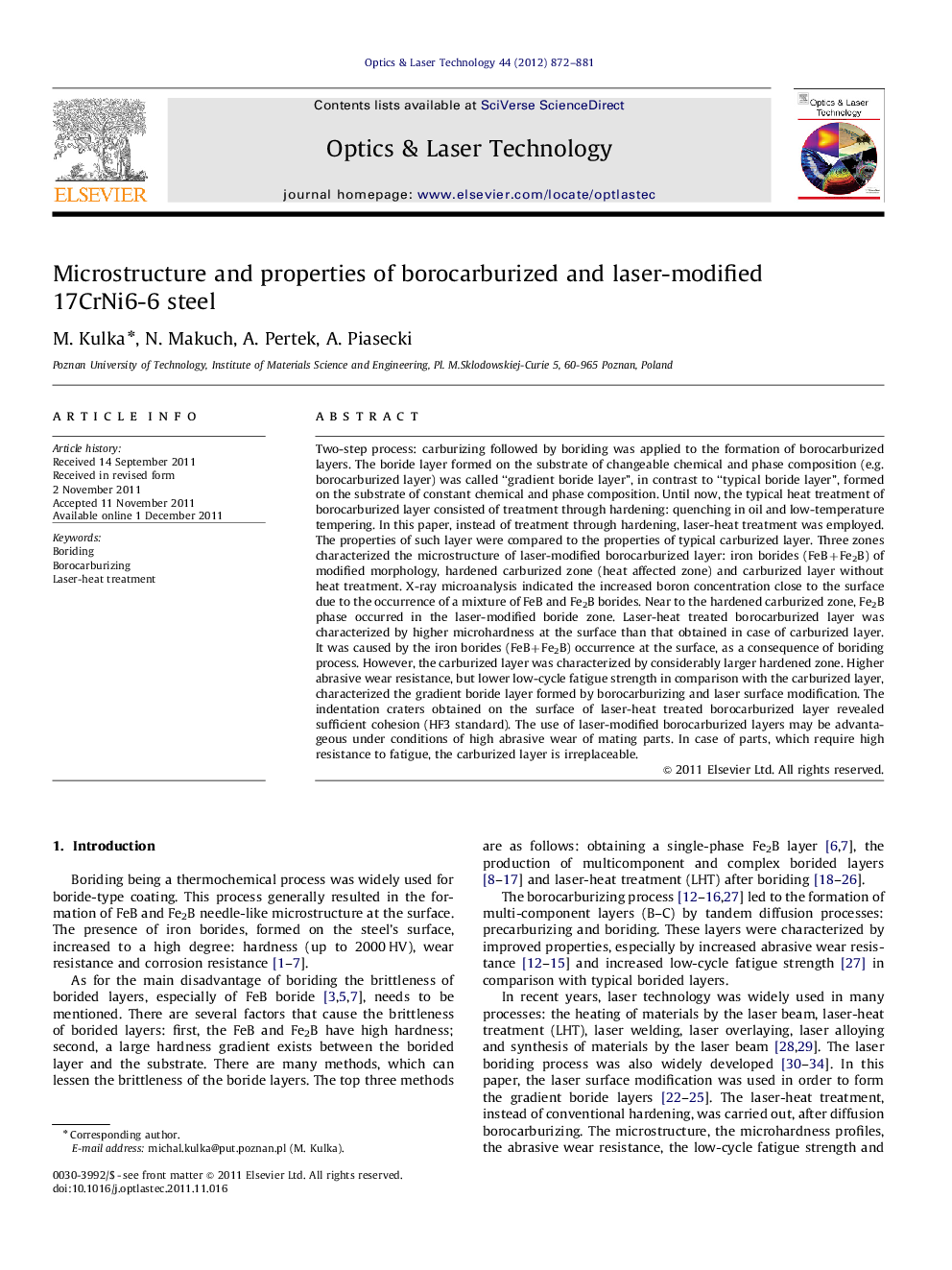| کد مقاله | کد نشریه | سال انتشار | مقاله انگلیسی | نسخه تمام متن |
|---|---|---|---|---|
| 732461 | 893247 | 2012 | 10 صفحه PDF | دانلود رایگان |

Two-step process: carburizing followed by boriding was applied to the formation of borocarburized layers. The boride layer formed on the substrate of changeable chemical and phase composition (e.g. borocarburized layer) was called “gradient boride layer”, in contrast to “typical boride layer”, formed on the substrate of constant chemical and phase composition. Until now, the typical heat treatment of borocarburized layer consisted of treatment through hardening: quenching in oil and low-temperature tempering. In this paper, instead of treatment through hardening, laser-heat treatment was employed. The properties of such layer were compared to the properties of typical carburized layer. Three zones characterized the microstructure of laser-modified borocarburized layer: iron borides (FeB+Fe2B) of modified morphology, hardened carburized zone (heat affected zone) and carburized layer without heat treatment. X-ray microanalysis indicated the increased boron concentration close to the surface due to the occurrence of a mixture of FeB and Fe2B borides. Near to the hardened carburized zone, Fe2B phase occurred in the laser-modified boride zone. Laser-heat treated borocarburized layer was characterized by higher microhardness at the surface than that obtained in case of carburized layer. It was caused by the iron borides (FeB+Fe2B) occurrence at the surface, as a consequence of boriding process. However, the carburized layer was characterized by considerably larger hardened zone. Higher abrasive wear resistance, but lower low-cycle fatigue strength in comparison with the carburized layer, characterized the gradient boride layer formed by borocarburizing and laser surface modification. The indentation craters obtained on the surface of laser-heat treated borocarburized layer revealed sufficient cohesion (HF3 standard). The use of laser-modified borocarburized layers may be advantageous under conditions of high abrasive wear of mating parts. In case of parts, which require high resistance to fatigue, the carburized layer is irreplaceable.
▶ Laser heat treatment was proposed to the formation of gradient borocarburized layers. ▶ Wear resistance is higher than that obtained in case of diffusion carburizing. ▶ Low-cycle fatigue strength is lower than that obtained in case of diffusion carburizing. ▶ Borocarburized and laser heat treated layers reveal sufficient cohesion.
Journal: Optics & Laser Technology - Volume 44, Issue 4, June 2012, Pages 872–881